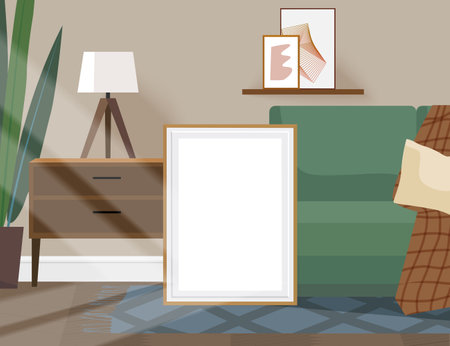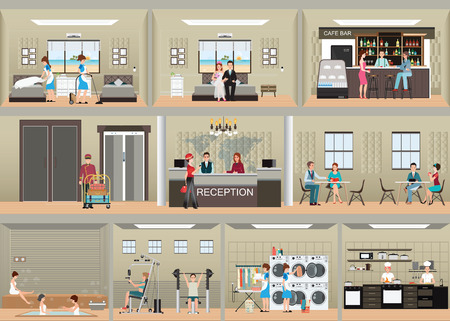Embracing the Heritage: Traditional Materials in the Contemporary Home
In the heart of British interior design lies a deep reverence for traditional materials, echoing centuries of architectural heritage. Exposed brick, rugged stone, and warm timber are not merely remnants of the past; they are celebrated elements that continue to define contemporary homes across the UK. These materials, with their rich textures and organic charm, create a tactile foundation that bridges history with modernity. Whether it’s the characterful patina of reclaimed oak beams or the understated elegance of a classic brick feature wall, such details anchor spaces in authenticity. As we explore the integration of cutting-edge technologies within our living environments, these quintessentially British materials offer a timeless backdrop—inviting innovation without sacrificing soul or sense of place.
2. A Seamless Blend: Smart Technologies in Everyday Living
Integrating smart home technologies into traditional British residences requires a careful balance between modern convenience and respect for heritage aesthetics. The fusion of smart lighting, heating, and security systems with classic architectural features not only elevates comfort but also caters to the distinct rhythms of British life. For example, many period homes feature high ceilings and ornate cornices; contemporary smart lighting solutions can be subtly recessed or installed as wireless fixtures, preserving the integrity of historic plasterwork while providing energy-efficient illumination. Similarly, underfloor heating systems discreetly warm stone or hardwood floors typical in older properties, delivering consistent warmth suited to the UKs variable climate without disrupting traditional interiors.
Smart Home Features Tailored for British Lifestyles
| Technology | Integration Approach | Benefit for UK Homes |
|---|---|---|
| Smart Lighting | Wireless controls, dimmers, adaptive colour temperature matching daylight patterns | Enhances mood during long winters, preserves architectural details |
| Smart Heating | Zoned thermostats, underfloor options, radiator valves compatible with traditional systems | Improves energy efficiency in draughty buildings, supports variable room use |
| Smart Security | Discreet cameras, vintage-style doorbell integration, remote monitoring via apps | Keeps period facades uncluttered, offers peace of mind in urban and rural settings alike |
Catering to Architectural Nuances
The quintessential British home often boasts unique layouts—think winding staircases or split-level living spaces—which present challenges for uniform technology deployment. Adaptive smart systems can be tailored to these quirks: multi-room audio follows users from drawing room to conservatory, while custom-fitted sensors respect thick masonry walls without invasive rewiring. This thoughtful approach ensures that even centuries-old cottages or Georgian terraces can enjoy modern convenience without sacrificing their character.
The Result: Effortless Modern Living Within Classic Spaces
This seamless integration of smart technologies enables homeowners to maintain a sense of tradition while enjoying contemporary comforts. It’s an evolution that pays homage to heritage—where intuitive control meets tactile materials such as exposed brick, polished oak, and soft wool textiles—demonstrating that innovation and authenticity can coexist beautifully within the context of British domestic life.

3. Natural Textures and Modern Aesthetics
Blending modern technology with traditional British materials creates a rich sensory experience within the home. Raw materials such as linen, wool, and native wood—oak, ash, or elm—bring an unmistakable warmth and tactile appeal that contrasts beautifully with the crisp lines of contemporary fixtures. These natural textures not only soften the overall aesthetic but also ground high-tech features in a sense of heritage and comfort. For example, a smart lighting system installed above exposed wooden beams, or underfoot heating beneath authentic stone flooring, creates visual intrigue while enhancing everyday functionality. Incorporating handwoven textiles and locally sourced timber into open-plan living spaces evokes both modern minimalism and timeless British craftsmanship. This thoughtful combination elevates interiors from merely functional to truly inviting, ensuring that innovation never comes at the expense of character.
4. Energy Efficiency and Sustainability
Modern British homes are increasingly defined by their commitment to energy efficiency and sustainability, reflecting both contemporary values and traditional sensibilities. Integrating smart technology with time-honoured materials is a key part of this movement, ensuring that eco-conscious living doesn’t come at the expense of character or comfort.
Sustainable Technology Solutions in the British Context
One of the most popular innovations is the use of smart thermostats, such as Hive and Nest, which allow for precise temperature control and learning algorithms that adapt to daily routines. These technologies work seamlessly within period properties, helping reduce energy consumption while maintaining cosy interiors typical of British design.
Solar panels are also making their mark across the UK’s varied architectural landscape, from Victorian terraces to modern new-builds. When paired with traditional slate roofs or timber cladding, these systems provide renewable energy without visually disrupting the charm of classic British exteriors.
Blending Tradition with Modernity
| Technology | Traditional Material | Eco-Friendly Benefit |
|---|---|---|
| Smart Thermostats | Stone or brick walls | Reduced heating costs and optimised energy usage |
| Solar Panels | Slate roofing | Renewable electricity generation; lower carbon footprint |
| LED Smart Lighting | Exposed beams or panelling | Lower energy use; longer bulb lifespan |
A Harmonious Approach
The integration of these technologies with natural textures not only preserves but enhances the unique warmth of British homes. By choosing sustainable solutions that respect both heritage and future needs, homeowners can enjoy spaces that are as environmentally responsible as they are visually appealing.
5. Case Studies: British Homes Reimagined
Historic Townhouse Meets Smart Living in Bath
In the heart of Bath, a Grade II listed Georgian townhouse has been thoughtfully reimagined for 21st-century living. The original stone façade and period mouldings are lovingly preserved, while discreet smart home technology brings modern convenience without disrupting the building’s heritage charm. Underfloor heating is controlled via a smartphone app, and bespoke oak cabinetry cleverly conceals automated lighting and sound systems. This seamless fusion allows residents to enjoy both the tactile warmth of traditional materials and the effortless control of modern tech.
Cotswold Cottage: Embracing Nature and Innovation
A classic Cotswold cottage, with its honeyed limestone walls and timber beams, has been transformed into an eco-conscious retreat. Here, natural clay plasters and wool insulation work in tandem with solar-powered roof tiles and intelligent climate controls. Large sash windows retain their historic profiles but now feature discreet triple glazing, ensuring energy efficiency while preserving character. Voice-activated blinds adjust to changing daylight, marrying rustic textures with contemporary living standards.
Modern Extension to a Victorian Terrace in London
In East London, a Victorian terrace has gained a light-filled extension that embodies the synergy between old and new. Exposed brickwork and reclaimed wood floors echo the property’s storied past, while touch-sensitive switches and integrated home security offer peace of mind. The kitchen showcases quartz worktops alongside traditional Belfast sinks, all illuminated by adaptive LED lighting that shifts throughout the day. This project demonstrates how sensitive design can celebrate British architectural heritage while embracing technological evolution.
Key Takeaways from UK-Based Projects
- Sensitive integration: Technology can be unobtrusive when tailored to respect historical features.
- Material authenticity: The use of locally sourced stone, timber, and plaster maintains an unmistakably British identity.
- Sustainability focus: Eco-friendly solutions—such as solar panels and smart insulation—enhance comfort while supporting environmental responsibility.
Conclusion
These inspiring case studies across Britain reveal how thoughtfully integrating smart technology with traditional materials can elevate both function and beauty within our homes. They serve as a blueprint for future projects, proving that innovation need not come at the expense of heritage or natural texture—instead, they can exist in perfect harmony.
6. Practical Tips for Homeowners
Balancing Innovation with Heritage
Integrating smart technologies into period properties in the UK requires a sensitive approach, especially when dealing with listed buildings or those situated in conservation areas. It’s essential to respect the character and history of your home while embracing the convenience of modern living. Here are some actionable tips to help you blend contemporary tech with traditional materials effectively and compliantly.
Understand Listed Building Regulations
If your property is listed, any alterations—even minor installations—may require Listed Building Consent from your local authority. Before making changes, consult your council’s conservation officer or a heritage consultant. Be prepared to provide detailed plans showing how new technologies will avoid damaging original features like cornicing, woodwork, or stone walls.
Select Discreet Smart Solutions
Choose technology that can be subtly integrated or concealed within existing architectural details. Wireless systems (such as smart thermostats, lighting, and security) minimise the need for intrusive wiring or drilling into historic surfaces. Consider using smart plugs and switches that fit existing sockets, allowing you to upgrade functionality without altering period fixtures.
Use Reversible Fixings and Non-Invasive Installation
Opt for reversible installation techniques where possible. For example, mount sensors or control panels using adhesive pads or non-invasive brackets rather than screws or nails that could damage plasterwork or panelling. This approach ensures any additions can be removed without trace if tastes change or regulations require restoration to original condition.
Prioritise Authentic Materials and Finishes
When introducing visible technology—like speakers or control hubs—choose models with finishes that echo traditional materials such as wood veneer, brass, or matte black metals. Alternatively, custom cabinetry or joinery can be designed to discreetly house modern devices while matching the room’s original aesthetic.
Collaborate with Skilled Craftspeople
Engage joiners, electricians, and designers experienced in working with heritage homes. Their expertise ensures installations adhere to best practices for both preservation and performance. They can also advise on bespoke solutions that honour your home’s unique character.
Maintain Open Communication with Authorities
Keep a transparent dialogue with planning officers throughout your project to ensure compliance at every stage. Document all work undertaken and keep records of permissions granted; this will prove invaluable during future property sales or further renovations.
By taking these practical steps, UK homeowners can enjoy the benefits of smart home technology without compromising the timeless appeal and protected status of their historic properties—ensuring old and new coexist beautifully under one roof.

